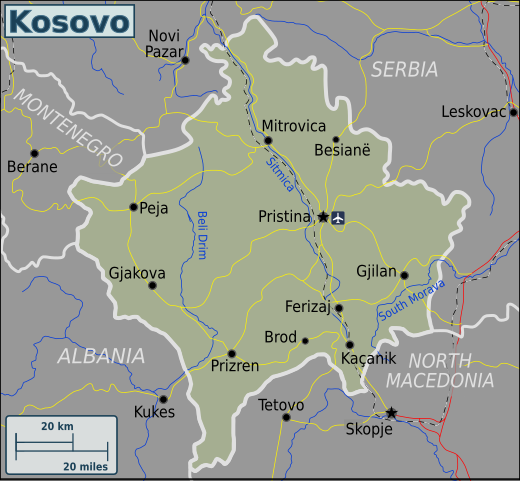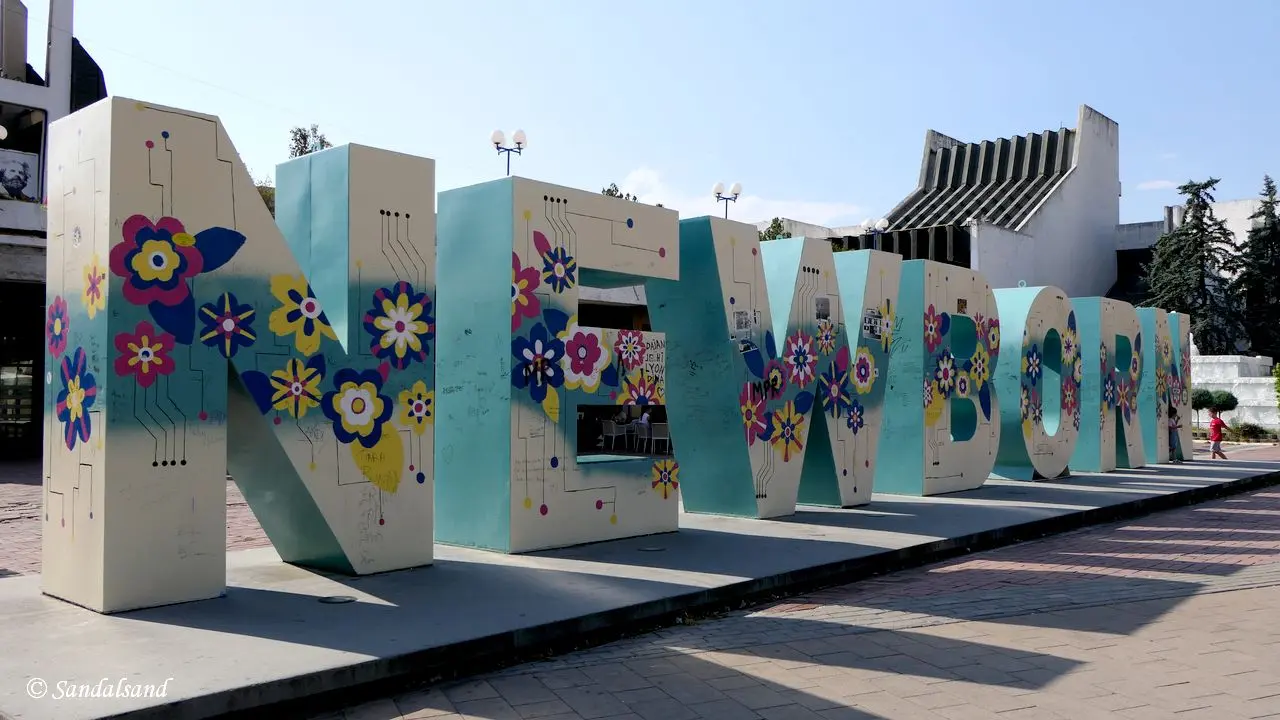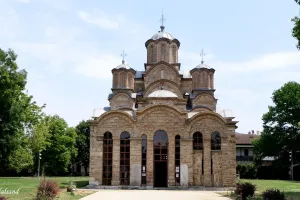This is a collection of pictures from Kosovo. The tiny country in the Balkans is a contested one but is developing rapidly.
If you look up all articles from Kosovo, you will also find a world heritage site and a regular travelogue. Before you do, start with these pictures from Kosovo.
Images from a road trip in Kosovo. Start at the southern border with North Macedonia and on to Pristina. Then west to Pec and exit to Montenegro over the mountains.
70 Photos
Afterwards, find more photo galleries on Sandalsand.
Fast facts – past
Kosovo is a landlocked country in the central Balkans, covering about 10,900 square kilometres. It shares borders with Albania, North Macedonia, Montenegro, and Serbia. With a population of around 1.8 million, Kosovo is one of Europe’s youngest countries, both politically and demographically.
The region has a long and complex history. In ancient times, it was part of Dardania, inhabited by Illyrian tribes. It later became part of the Roman and Byzantine empires. During the medieval period, Kosovo was an important centre of the Serbian kingdom, with many Orthodox monasteries still standing today.
The area fell under Ottoman rule in the late 14th century and remained part of the empire for over 400 years. During this time, Islam became widespread, and many Albanians, the region’s largest ethnic group, converted. Kosovo became a culturally mixed region with both Albanian and Serbian populations.
In the 20th century, Kosovo’s status shifted multiple times. After World War I, it became part of the Kingdom of Yugoslavia, and after World War II, it was an autonomous province within socialist Yugoslavia. Ethnic tensions between Albanians and Serbs increased over time, especially during the 1980s and 1990s.
In 1999, following a brutal conflict and NATO’s military intervention, Kosovo came under UN administration. The country declared independence from Serbia in 2008, a move recognised by over 100 countries, though not universally accepted. Serbia, Russia, and several other nations still oppose its independence.
Today
Kosovo is a parliamentary republic and has taken steps toward Euro-Atlantic integration. It aspires to join the European Union and NATO. Despite political challenges, Kosovo is building its institutions and economy, focusing on development and international partnerships.
Tourism in Kosovo is growing, especially among those seeking off-the-beaten-path experiences. Visitors can explore Ottoman-era towns like Prizren, hike in the Shar Mountains, or visit UNESCO-listed Orthodox monasteries such as Dečani and Gračanica.
Kosovo is known for its youthful energy, cultural diversity, and hospitality. The population is predominantly Albanian, but there are also Serb, Bosniak, Turkish, and Roma communities. Religion, language, and tradition blend in ways that reflect the country’s layered past and hopeful future.
Learn about the country on Wikipedia. The text above is derived from various sources.
Map and regions
An introduction to the regions of Kosovo follows beneath this map. (source):

Central Kosovo
Contains the capital Pristina, which has a lively centre with bustling cafes and bars, galleries and museums, the “Newborn” independence monument and the Germia National Park right on the edge of the city. Cultural events are hosted here year-round and it has regular transport links to towns and cities throughout Kosovo. Outside of the city, lies the town of Gračanica with its 14th-century Serbian Orthodox monastery and nearby Ulpiana archaeological site. The region also includes two monuments to the Battle of Kosovo in 1389, a tower at Gazimestan and the Tomb of Sultan Murad I.
Western Kosovo
The west is Kosovo’s most scenic region and has a rich cultural heritage. Its two biggest cities are Peja, with its scenic location and 13th-century UNESCO-protected Patriarchate, and Gjakova with its Ottoman old town restored in the 21st century. Behind Peja lies the dramatic Rugova Gorge, a national park and playground for outdoor activities, while east of Gjakova is wine-making country, with vineyards surrounding the town of Rahovec. Serbian heritage can be explored in the medieval village of Velika Hoca, where rakija (brandy) is still made in the traditional way, and the Visoki Decani monastery with its 14th-century original frescoes. Two sets of waterfalls in the west can offer a refreshing getaway, including Mirusha on the road from Prishtina to Gjakova and Radavc, between Peja and Montenegro, where the source of the White Drin River can be found.
Southern Kosovo
The city of Prizren lies at the heart of southern Kosovo, with its historic old town, hilltop castle, and impressive array of mosques and churches. South of Prizren is the remote mountainous area of Dragash, home to one of the Balkans’ most picturesque villages, Brod. The Sharri mountains stretch across Kosovo’s southern border, and offer ample opportunities for hiking and skiing, on the slopes of Brezovica.
Northern Kosovo
At the centre of the northern region is the city of Mitrovica, with its mixed Albanian and Serb population divided by the River Ibar. Nearby is the town of Vushtrri, the oldest settlement in Kosovo that has a centuries old castle and stone bridge. At Prekaz, close to Skanderaj, visitors can get a glimpse into Kosovo’s more recent history, at a monument to the Jashari family, whose massacre in 1998 is often seen as the trigger to the escalation of violence at the end of the 20th century. Opportunities for hiking are provided by rural regions in the north, including in Shala e Bajgores east of Mitrovica and around the lake outside of Zubin Potok.
South-eastern Kosovo
The rolling hills of Kosovo’s southeast are home to the bustling city of Gjilan, a medieval fortress at Novo Brdo and the church where Mother Theresa received her calling at Letnica. On the road from Prishtina to Skopje lie the cities of Ferizaj and Kacanik, with their murals and post-industrial heritage, and a chance to explore the Gadime caves.
Sandalsand’s pictures from Kosovo are from a road trip in the Balkans. I entered Kosovo from North Macedonia in the south and exited into Montenegro in the west. I did not visit the north or east of the country.



